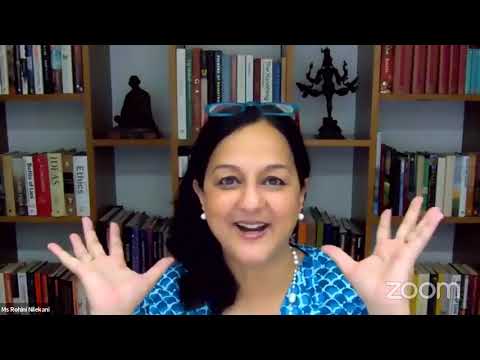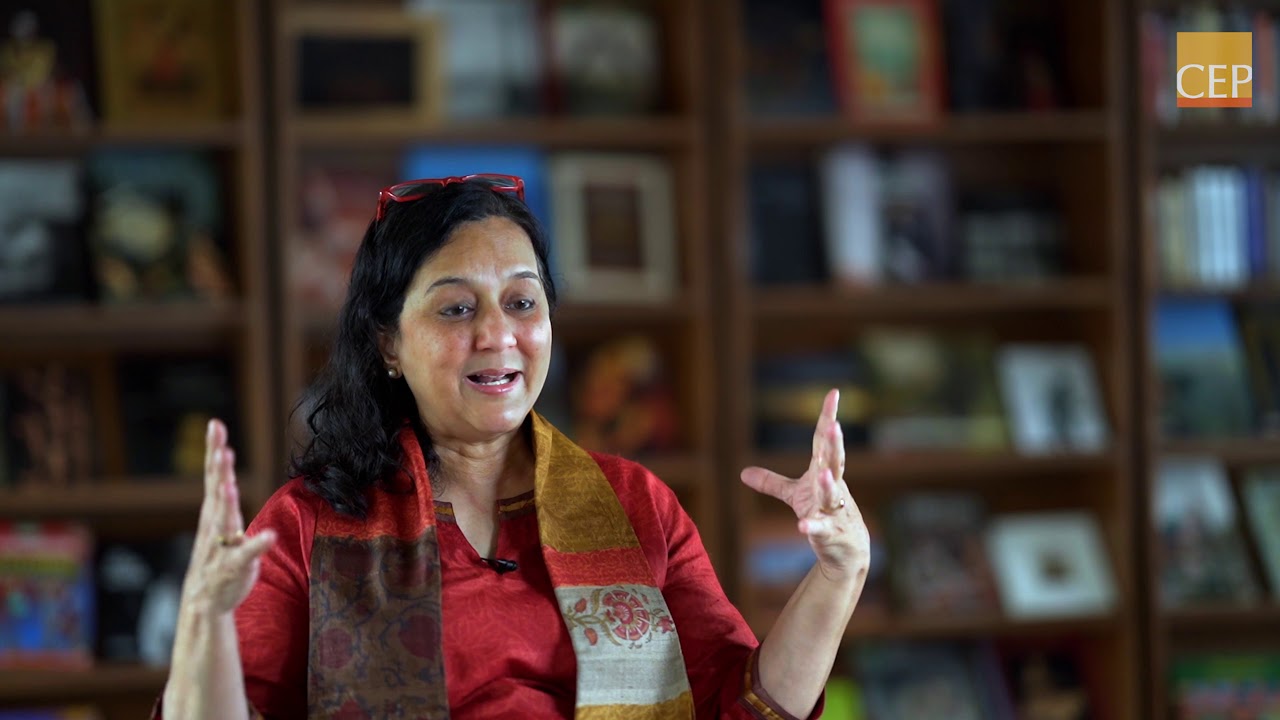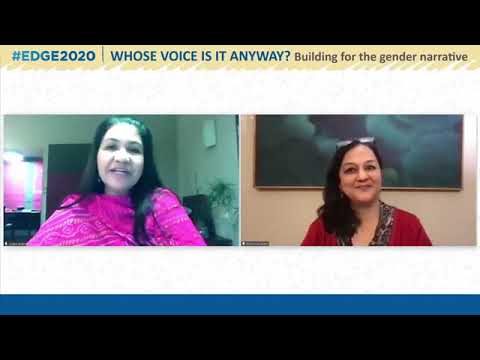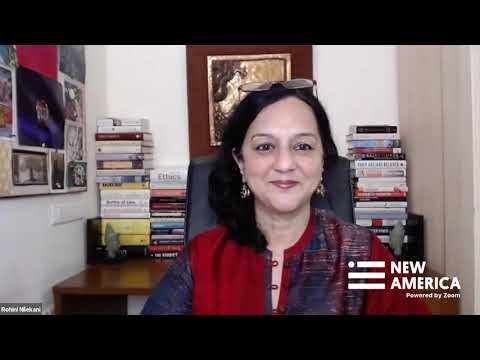This is an edited version of Rohini Nilekani in conversation with Naushad Forbes, business leader and ex-President of the Confederation of Indian Industry, for an episode of India Development Review’s podcast, On the Contrary. Along with Arun Maira, the host of the show, they discuss what markets must include, whom they should serve, and the role they must play in enabling inclusive economic growth.
The Assumptions of a Good Market
A good market is one which helps to increase the public interest and prosperity, not just for a few but for all people. Ideally, this is also done without harming our planet. I see a good market as a kind of conversation rather than a dialogue of the deaf. It should be a way for people, societies, and nations to discover services of value that can be traded in as fair a way as possible. In our 21st century environment, there are so many questions to ask about market failure. However, I prefer to call it societal failure because it only happens when societies and the state are not able to create the leadership, institutions, and governance which can rein in excessive market power. I look forward to a world where Samaaj, Bazaar and Sarkaar can be in a better balance.
Unfortunately, over this past century we have watched this balance grow increasingly skewed. My philosophy is that societies came first i.e. people came first and created both the Sarkaar and the Bazaar in order to reduce conflict among themselves and create more efficiency, productivity, and prosperity for all. Over time though, instead of the Samaaj being the first sector, somehow we have relegated civil society and its institutions to the ‘third sector’. We need to set that right at the outset if we are going to make sure that the state and the markets are more accountable to the larger societal interest. We must now ask ourselves, how do we create a better system of capitalism or market economy which doesn’t allow all value to just pull towards one end of the spectrum? Secondly, how do we start to keep at the forefront of our minds that we are the proverbial frog and the water is getting hotter without us noticing it, because this is the decade in which we have to heal ourselves and the planet.
Naushad Forbes points out that when people talk about markets, they assume that a market needs many buyers and sellers to work efficiently, that a single buyer or seller cannot control the market, and that there is equal information about the potential benefits and costs of the trade on both sides of the seller and buyer. This is what creates equity that markets can potentially deliver together with efficiency. However, when these assumptions are not true, we end up with a less equitable market. So, how do we enable markets to work for people who are most disadvantaged? The solution may be to invest in the capabilities and skills of people.
Naushad gives the example of investing in education, since it enables people to participate in more productive activities and participate in markets where they’re able to earn good salaries and livelihoods, and get the rewards that an efficient operating system can deliver. There are also many failures that take place in markets, one being the environment since the cost of pollution is not something that markets have factored in. It’s possible for states and civil society to tax itself such that it invests in education and capabilities for all people in a society such that they can participate in markets. At the same time it’s possible to create minimum standards that must be maintained regardless of what the market outcome might be.
Listening to What the People Want
We need our government to start creating better regulations in order to safeguard certain resources, especially when it comes to environmental issues. These don’t have to be regulation which kills markets or innovation, but regulation which creates fair competition. As of now, competition seems to be reducing instead of increasing. We have seen how so many sectors that were more competitive are now becoming oligopolies, if not monopolies. This is not good because the power of some of these big players has become so vast that when innovations do pop up, they just swallow them up into their own stable. We need the government to be able to enable competition and innovation coming from everywhere, which means it must also look at how a small entrepreneur with a very good idea does not have to take far more risk in putting his innovation out than a big player.
This point goes back to the welfare role of the government. We cannot separate the idea of innovation and entrepreneurship from a safety net because otherwise we’re distributing risk unfairly. When a small entrepreneur does not have the safety net of public health, public education, disaster management, or the risk of absorbing failure, in comparison to the big guy who has access to private education, private healthcare, private capital, etc., then we are not distributing the risk of innovation fairly. This is where the government has to step in to create fair competition, a welfare net which I think is necessary for creating good markets. It also needs to regulate the excessive power and oligopolies, monopolies forming. Ideally, capital would also be made available to all, in the right doses and at the right time without you having to sell your soul for it.
If we consider the trends of the past 150 years, an increasing number of people in the world have been able to participate in activities from which they have then benefitted, says Naushad. The same is true in India – since 1991 we have seen a greater reduction in the percentage of the population below the poverty line. These are indications that markets deliver a degree of prosperity, which any alternative system tends to struggle with. The issue is that it may not deliver this uniformly and equitably. However, Naushad argues that allowing the government to try to regulate the market may not be a wise solution. He mentions what happened in India in the ‘70s and ‘80s, when the government determined the price of cement, which led to a situation where there was a shortage economy co-existing with high prices. Once the intervention was removed by the government, the market operated efficiently – the price fell and the shortages vanished at the same time. So Naushad suggests finding ways where institutions independent of the government set the rules of the game. Some of them might be public institutions, others might be private institutions and they could propose a variety of formal and informal rules. However, he does not believe that India has the capability and competence in government to determine the right outcomes.
We need to listen to what the people want. Naushad gives the example of the ongoing farmers’ protest, caused in part because opposition voices were not heard. We have existing mechanisms and our parliament, where the opposition has a right to be heard. When they are not, then that voice shows up in the form of protests on the street. If we use our existing mechanisms to hear people out, we will be able to address many of those concerns. Perhaps not all of them, but enough of them so that people believe that some of these changes and reforms are in their interest. The ones that aren’t, that strike fundamentally at a livelihood, are addressed in another way such that we then say, “This is something in the longer run that I’m willing to go along with.”
Arun Maira notes that while India’s economy has improved overall since 1991, the broader picture is concerning, in terms of the size and growth of the economy and its relation to an increase in environmental degradation and inequities. Although the size of the economy has been growing larger, the shape has been worse. Per unit of GDP growth, the Indian economy has damaged the environment more than almost every other country, and it has grown less jobs per unit of GDP growth when we need to grow much more because of our population than other comparable economies. To Arun, we have stopped listening to the people who are not benefiting from this system, and when they speak up, we say they don’t understand and that they are just protesting good reforms. The experts believe they have the solutions, the economists believe they know how economies should be run, and they’re not listening to diverse voices of other disciplines, and certainly not of people with less power in the system.
A Willingness to Learn
In order to go forward, I think that markets need to return to being spaces of discovery of goods, services, and talent, and we need to deepen trust. There has been a breakdown of trust between the state and the markets, and between the consumers and the markets as well. So we need to find quick ways to rebuild that trust. My attention is especially focused on the environmental dimension. The economy is a wholly-owned subsidiary of the ecology, and this ecology is very critical to people especially in India, because our people’s livelihoods are so deeply tied to the ecology.
We say that the perfect way of getting more people into prosperity is by pulling them off of farms because we have very low productivity in agriculture, so we don’t need 600 million people to be engaged in this sector. But even if 400 million of them are removed from the equation and we try to do more productivity on our farms, what will we do with the 400 million people and what will that do to the ecology? Unless we’re able to answer that question, I don’t think we can even think of reimagining agriculture. I see the conversation happening between the government and farmers as an opportunity to rethink how we can do sustainable agriculture while keeping people’s livelihoods attached to the land in a sustainable way. That’s one avenue through which we can go about restoring the idea of local innovation, discovery, and trust.
We are all citizens first. We are not consumers or subjects of the state first, we are citizens and human beings first and foremost. So we need to develop our own ability to hold conversations about what good markets and good states can be. We need to do this so that we can all continue to survive together. We need the power of markets for its innovation and drive towards efficiency, and we need the state to hold human beings accountable and to create the institutions to have more equity, to unleash the good of markets. I think people are realising that the time has come to grapple with these big questions
The problem is that all of us, myself included, want to prove that we are right. And if I’m right then you have to be wrong. So how do we, in this decade of increasing polarization, have the confidence in ourselves to hold on to the grey spaces between black and white and listen to other people’s ideas without judgement? It’s only by doing this that we may be able to find our way out of the existential threat that we are facing right now and unleash more creativity. The minute I shut you down, I shut down the potential of your ideas and your innovation and vice versa. We need to learn how to hold and express doubt without fear of reprisal, and recover those spaces of speaking maturely without judgement. There are many pathways given by so many experts, so we should listen and occupy the grey area to understand its nuances and riches.
We have been experimenting with unbridled democratisation of opinion. It was necessary because at first, not enough people had a platform to say whatever they wanted. Social media allowed that to happen. It’s been a wild ride and an amazing experiment, but experiments can and do go wrong. Reason lies in knowing when an experiment has gone too far. While we should never have to clamp down on anybody saying anything, to undermine professionalism and experience and allow everyone to be an expert just because they have an opinion has actually damaged the building of better governance, better markets, and better societies. So we should allow ourselves to respect experience and professionalism.
The problem occurs when those who are already in power monopolise what expertise is, who can become experts, who can acquire experience, and who disregard those traditional wisdom experts. This is when things go wrong. But we have reached a point of extreme danger in society to say that everyone is equally able to profess an opinion, because we are not. Then it’s a race to the bottom. Even when it comes to the relationship between consumer and the producer, I think some forms of expertise and experience have to be respected to make the markets better. As Arun mentions, the experts we require now to find the new normal, which will produce a more inclusive pattern of growth, more equity and justice, and less environmental degradation, are experts who are humble, listen deeply, and are willing to learn.




